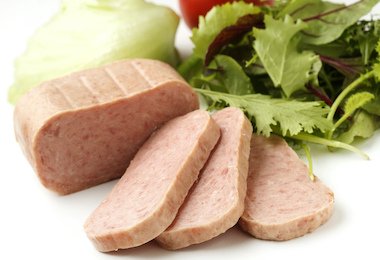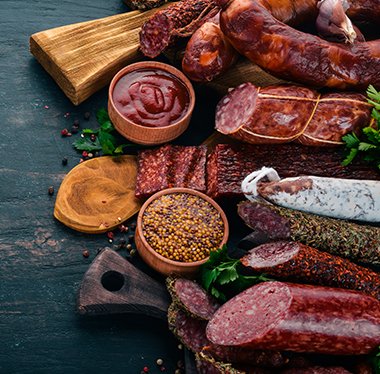MEATS
When it comes to purchasing meat or meat analogue products, the most influential factor for the consumer is the color. Meat color will directly impact the choices and the consumption desires of the consumer. Stability to heat and light, pH sensitivity and interaction with oxygen are some of the challenges in the field of natural colorant development. ROHA can propose a complete range of natural and carmine alternative colors for meat, seafood, and meat analogue applications, following the latest consumer demand and market trends. Application performance and regulatory restrictions can be challenging to selection of the right colors. ROHA’s meat scientists are experienced to provide you the optimum natural color packages for meat and meat analogue applications.

Natural Colors for Raw Meat Products
Natural colors are often applied in raw meat applications to comply with global regulatory restrictions. Factors such as pH, myoglobin content, and packaging systems can influence the color application in raw meats. However, the Natracol range has a wide range of natural colors for all meat needs. With experienced innovators and problem-solving skills, ROHA’s expertise provides customized solutions and professional industrial recommendations to our clients in raw meat applications.

Natural Food Colors for Fully Cooked Meat Products
Processed mammal and poultry-derived meats like beef, pork, lamb, chicken, turkey, goose, duck, etc. are the main products in the cooked meat category. However, implementing the cooking process on raw meat many complex chemical reactions such as myoglobin breakdown or browning reactions may occur. Also, pH, muscle type, myoglobin concentration, water holding capacity, and the heating process can significantly affect color performance. To answer the above, ROHA’s natural color range, Natracol has natural color solutions for cooked meat applications. Natural color pigments are broadly used to help with delaying the onset of color loss or maintaining desirable color and quality in meat and poultry products.

Natural Colors for Canned Meat Products
The canning process is used to extend the shelf life of meat products as sealing the product in a container and thermal processing can destroy spoilage microorganisms. Applying color to canned food applications has many challenges such as heat treatment, pH, interactions with food ingredients, and solid: liquid ratio that can affect the color performance. Products like meat stews, whole muscles, luncheon meat, sausages, sauces with meat pieces, and paste products generally come under canned meat applications. Thus, to brighten the appearance and replenish the loss of color from the heating process, ROHA’s Natracol range of natural food colors possesses a variety of color solutions used for canned meat applications.

Natural Food Colors for Meat Analogues Products
As the market is shifting towards plant-based diets, many have inspired a new wave of meat analogues as a medium to make plant-based diets more attractive to a wide range of audiences. The main objective of adding colors to meat analogue is make it look alike real meat. Meat substitutes have veggie burger patties, vegetarian meatballs, bean burgers, vegetarian hot dogs, imitation bacon bits, textured soy protein, bean curd etc., under their diverse product portfolio. ROHA’s Natracol range has all the natural food colors solutions for meat alternatives and to overcome the challenges of storage conditions, packaging systems, heat, pH, interaction with other ingredients and water migration that can affect the color performance.

Natural Food Colors for Seafood Products
Surimi seafood products have many challenges in mimicking the color of meat or shellfish and lobster, such as heat treatment, storage conditions, packaging types, and interactions with other foods. Among the various types, Surimi, referring to a paste made primarily from fish, is one of the most common fish products with color use. With in-depth research and experience, the Natracol range of natural food colors applies non-bleeding technology to provide customers with a wide range of color solutions with consistent performance in seafood applications.

Natural Food Colors for Edible Meat Casings
The pH, heat, packaging system, storage conditions, and interactions with other food additives all have impacts on the selection of food colors in meat casing applications. Abiding by regulatory guidelines, natural colors can be used to color edible meat casings to improve physical appearance and restore color loss from the thermal process. With a solid scientific background and innovative problem-solving abilities, we provide customers with viable, healthy and sustainable Natracol natural color solutions in meat casing applications.


Global
Simpsons